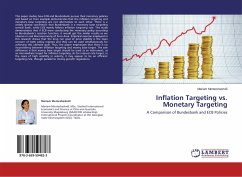Applying the Ordinary Least Square method and panel data analysis, the performance of inflation targeting (IT) regime is analyzed in 11 developed and developing economies. The results show that the implementation of inflation targeting has effectively reduced the inflation rate and stimulates high output growth. The reduction of inflation rate is larger in developing economies but the gain in higher output growth is larger in developed economies. On the other hand, there is strong evidence that inflation targeting has led to higher volatility in exchange rate of developed economies. Furthermore, the deviations of inflation and output gap have increased in the post-IT period in few economies. However, we do not find evidence that inflation targeting induces trade-off relationship between inflation and output gap as the trade-off relationship between inflation and output gap also detected in the pre-IT period. Overall results show on better economic conditions after the implementation of inflation targeting regime.
Bitte wählen Sie Ihr Anliegen aus.
Rechnungen
Retourenschein anfordern
Bestellstatus
Storno








